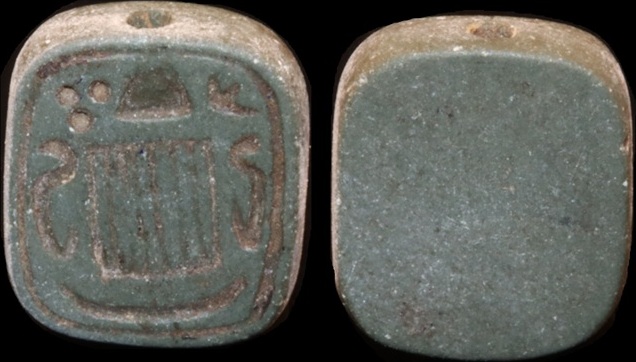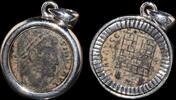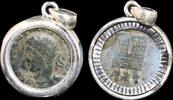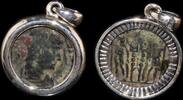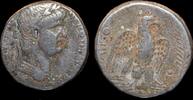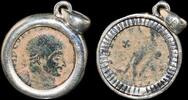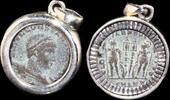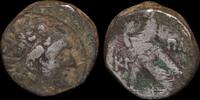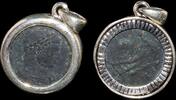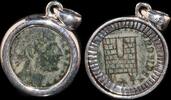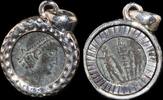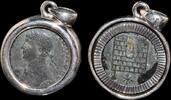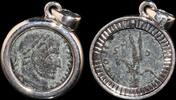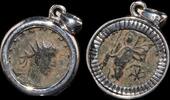MA-ID: 195202138
Bewertungen Barakat
Nice coin - a very rare type from Salamis, Philip III of Macedon.
Excellent communication
very good to deal with
Highly recommended
Excellent Seller
A very nice example from Tyre, year 37.
ISRAEL, Ancient Egyptian Square Stone Scarab Bead, Very Rare
Barakat Gallery 

7
Seit 7 Jahren bei MA-Shops
165 Bewertungen,
97,1 % Positiv (seit 24 Monaten)
Weltweiter Versand
257,67 EUR300.00 US$
Es kann Einfuhrumsatzsteuer anfallen.
kostenloser Versand
Lieferzeit: 17 - 20 Tage*
kostenloser Versand
| Bestellhotline +49 (0)2871 2180 383 |
| Zahlungsarten |
| Überweisung |
| Scheck/Money Order |
E 07
Stein
Ancient Egyptian Scarab Bead, Very Rare
12 MM
The Scarab represented - Self-Generation, Resurrection and Renewal. The scarab was based on the image of the dung beetle, or Scarabeus Sacer, and it was used by the ancient Egyptians for many purposes such as recording historical events or inscribing prayers to be placed on mummies for protection against evil. Scarabs were also used as seals by officials. The writing would be inscribed on the base (flat side) of the scarab, and sizes varied from several centimeters to several meters long. It was not really until Pharaoh Amenhotep III's reign that the scarabs were made extra large (up to 2.5 metres long in the Karnak Temple!). Scarabs were made from a wide variety of materials such as carnelian, lapis lazuli, basalt, limestone, schist, turquoise, ivory, resin, steatite, and bronze. Most scarabs were made of steatite which was then covered with a turquoise coloured glaze. The stone was soft and easy to work, but when glazed, it became hard and durable. In the 12th dynasty, amethyst was used for the first time (a very hard material). Gold and silver scarabs have also been found, but are much rarer, because of grave robbers. The Greeks used onyx, agate, and quartz in making their scarabs. These materials were not used in Egypt until the Ptolemaic period, when Greek influence on Egyptian life was at a peak. The Greeks also had more advanced technology (in some areas) and could tfore work hard materials with greater ease than the Egyptians could.
12 MM
The Scarab represented - Self-Generation, Resurrection and Renewal. The scarab was based on the image of the dung beetle, or Scarabeus Sacer, and it was used by the ancient Egyptians for many purposes such as recording historical events or inscribing prayers to be placed on mummies for protection against evil. Scarabs were also used as seals by officials. The writing would be inscribed on the base (flat side) of the scarab, and sizes varied from several centimeters to several meters long. It was not really until Pharaoh Amenhotep III's reign that the scarabs were made extra large (up to 2.5 metres long in the Karnak Temple!). Scarabs were made from a wide variety of materials such as carnelian, lapis lazuli, basalt, limestone, schist, turquoise, ivory, resin, steatite, and bronze. Most scarabs were made of steatite which was then covered with a turquoise coloured glaze. The stone was soft and easy to work, but when glazed, it became hard and durable. In the 12th dynasty, amethyst was used for the first time (a very hard material). Gold and silver scarabs have also been found, but are much rarer, because of grave robbers. The Greeks used onyx, agate, and quartz in making their scarabs. These materials were not used in Egypt until the Ptolemaic period, when Greek influence on Egyptian life was at a peak. The Greeks also had more advanced technology (in some areas) and could tfore work hard materials with greater ease than the Egyptians could.
| Versandkosten | ||
|---|---|---|
| bis 429,45 EUR | über 429,45 EUR | |
| Deutschland | Versandkostenfrei | Versandkostenfrei |
| Vereinigte Staaten von Amerika | Versandkostenfrei | Versandkostenfrei |
| Europäische Union | Versandkostenfrei | Versandkostenfrei |
| Welt | Versandkostenfrei | Versandkostenfrei |
Informationen zum Kauf bei MA-Shops
Bestellungen bei MA-Shops sind jederzeit möglich und werden innerhalb von 2-4 Arbeitstagen verschickt.
Ein über die MA-Shops abgesicherter Kauf findet niemals außerhalb von MA-Shops statt.
Bestellen Sie sicher online mit dem MA-Shops Warenkorb.
Vielen Dank.
Ein über die MA-Shops abgesicherter Kauf findet niemals außerhalb von MA-Shops statt.
Bestellen Sie sicher online mit dem MA-Shops Warenkorb.
Vielen Dank.
|
Verkäufer-Startseite | 0Warenkorb | AGB | Impressum | MA AGB | Datenschutzerklärung | Garantie | MA-Shops Neuzugänge Copyright ® 2001-2025, MA-SHOPS Muenzen All Rights Reserved. Designated trademarks and brands are the property of their respective owners. |
 Münzen beim Fachhändler kaufen
Münzen beim Fachhändler kaufen



